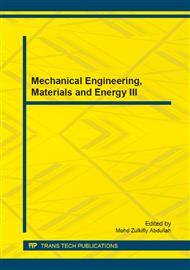p.574
p.578
p.583
p.587
p.594
p.599
p.603
p.607
p.611
Blind Image Quality Assessment Using Latent Dirichlet Allocation Model
Abstract:
In this paper, we propose a blind image quality assessment (IQA) method under latent Dirichlet allocation (LDA) model. To assess the image quality, firstly, we learn topic-specific word distribution by training a set of pristine and distorted images without human subjective scores. Secondly, LDA model is used to estimate probability distribution of topic for the regions in the test images. Finally, we calculate the perceptual quality score of the test image by comparing the estimated probabilities of topics of the test image with that for the pristine images. Note that the quality-aware visual words are used to represent the images, which generated with respect to the natural scene statistic features. Experimental evaluation on the publicly available subjective-rated database LIVE demonstrates that our proposed method correlates reasonably well with different mean opinion scores (DMOS).
Info:
Periodical:
Pages:
594-598
Citation:
Online since:
December 2013
Authors:
Price:
Сopyright:
© 2014 Trans Tech Publications Ltd. All Rights Reserved
Share:
Citation:


